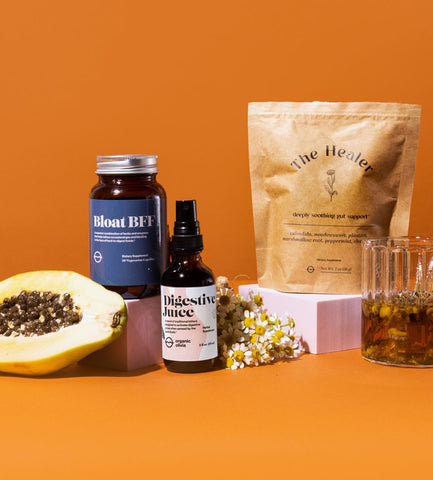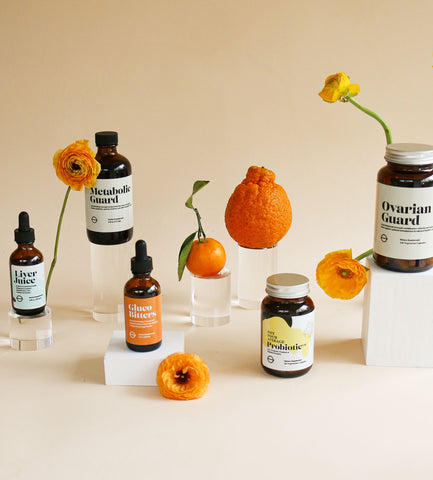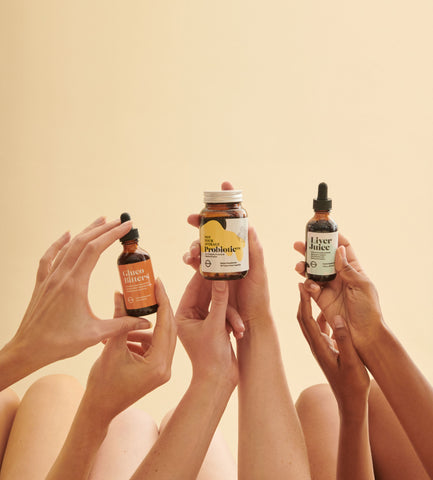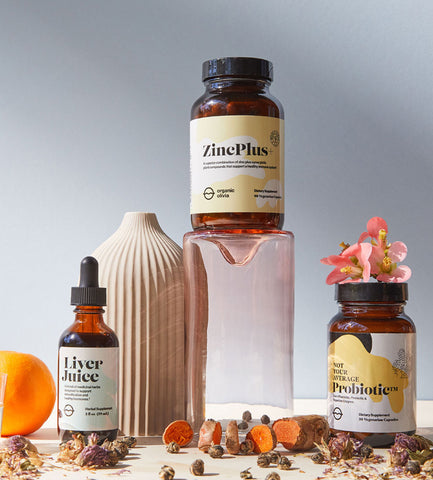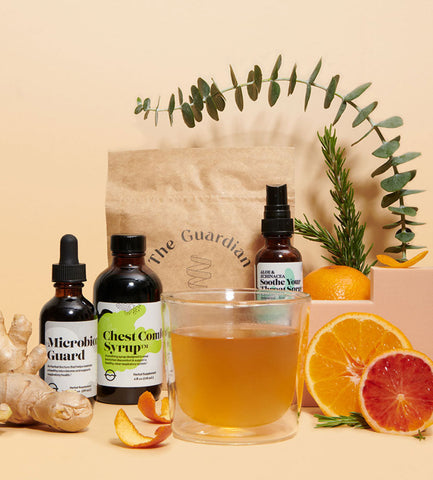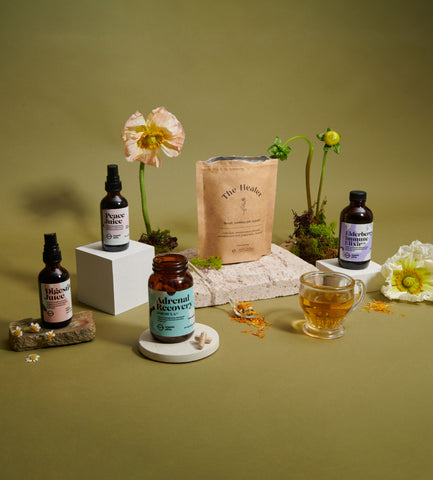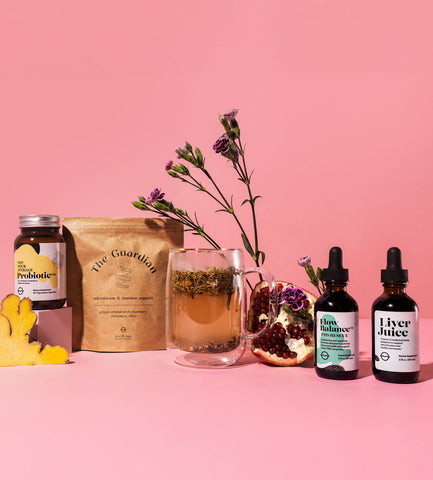Here's something that might surprise you: 70% of women deal with pH imbalances at some point in their lives. Yet most women don't fully understand what pH balance actually means for their vaginal health and overall well-being.
Your vagina naturally maintains a pH between 3.8 and 4.5, which means it's acidic. This isn't by accident — acidity is your body's first line of defense. It stops harmful bacteria and yeast from taking over and causing vaginal infections.
When your vaginal balance gets thrown off, your body will usually let you know. You might notice unusual discharge, odor, or discomfort. An abnormal vaginal pH often signals infections like bacterial vaginosis (from high vaginal pH) or vulvovaginal candidiasis, commonly known as a yeast infection (from low vaginal pH). What's more concerning is that higher pH levels can make you more vulnerable to sexually transmitted infections and other women's health issues.
The good news? You have more control over your vaginal pH than you might think. Throughout this guide, I'll walk you through what throws your pH off balance, how to spot the warning signs, and most importantly — simple, natural ways to restore and maintain healthy pH levels.
What is pH Balance in the Female Body?
Your body is constantly working to maintain specific pH levels in different organs and systems. This pH balance — especially in the vagina — is critical for your reproductive health and overall vaginal balance.
Understanding the pH Scale
Think of the pH scale as a measuring stick that tells you how acidic or alkaline something is. It runs from 0 to 14, with 7 being neutral (like pure water). Anything below 7 is acidic, and anything above 7 is alkaline or basic. To put this in perspective, battery acid sits near 0, while drain cleaner clocks in around 14.
The letters "pH" stand for "potential hydrogen" and measure how many hydrogen ions are floating around in a solution. More hydrogen ions mean lower pH (more acidic), while fewer ions create higher pH (more alkaline). It sounds technical, but this concept is actually key to understanding how your body protects itself.
What is a Healthy Vaginal pH balance?
Women of reproductive age should have a vaginal pH between 3.8 and 4.5, putting it in the moderately acidic range. This number isn't set in stone, though it shifts based on several factors:
-
Age: Girls before puberty and postmenopausal women often have higher vaginal pH levels, sometimes above 4.5
-
Menstrual cycle: Your period can temporarily raise vaginal pH since menstrual blood is slightly alkaline
-
Hormonal changes: Estrogen helps beneficial bacteria flourish, which keeps your pH acidic
Here's how your vagina maintains that acidic sweet spot: The cells lining your vaginal walls produce glycogen, which feeds the good bacteria called Lactobacillus bacteria. These bacteria then produce lactic acid, keeping your vaginal environment at the right pH level.
Why Vaginal Acidity Matters for Women’s Health
That acidic environment isn't just a random body quirk — it's your vagina's security system. The acidity stops harmful bacteria, yeasts like Candida albicans, and viruses from multiplying out of control.
Your vaginal ecosystem, also known as the vaginal microbiome, is like a balanced neighborhood where Lactobacillus bacteria are the good neighbors. They produce lactic acid and hydrogen peroxide, maintaining that protective acidic environment. This balance keeps troublemaking pathogens from moving in and taking over.
Research confirms that having a lower pH in your vagina compared to your blood or other body fluids helps shield your vaginal tissues from harmful organisms. Scientists call this a "dynamic equilibrium" — your vagina essentially runs its own self-cleaning and self-protecting system without any help from you.
What Causes pH Imbalance in Women?
Your vaginal pH can get thrown off balance more easily than you might think. Several common factors can shift your normally acidic environment to a more alkaline one, creating the perfect conditions for unwanted bacteria and vaginal infections to take hold.
Antibiotics and Medications
Antibiotic treatment presents a real dilemma for vaginal health. Yes, they kill the bad bacteria making you sick, but they also wipe out the good bacteria that keep your vagina acidic and healthy. Studies show this disruption can significantly reduce lactobacilli, allowing opportunistic pathogens to thrive and potentially leading to yeast infections or bacterial vaginosis. Birth control pills and other hormonal medications can likewise alter vaginal pH for some women.
Unprotected Sex and Semen Exposure
Semen has an alkaline pH between 7.1 and 8.0, considerably higher than your vagina's healthy acidic environment. During unprotected sexual activity, this alkalinity temporarily raises your vaginal pH, with studies showing it can remain elevated even after 10-14 hours. Moreover, research indicates that consistent condom use decreased bacterial vaginosis risk by 45%.
Hormonal Changes and Menopause
Estrogen plays a huge role in maintaining vaginal acidity. When estrogen levels drop during menopause, your vaginal pH typically rises above 4.5, compared to the normal 3.8-4.5 range during reproductive years. Your menstrual cycle also affects pH levels — menstrual blood has a pH of 7.4, temporarily raising vaginal alkalinity.
Douching and Scented Hygiene Products
Here's a startling fact: approximately 27% of US women aged 15-44 douche regularly. This is problematic because douching disrupts your vagina's natural bacterial balance, removing beneficial flora while creating an environment susceptible to infections. Scented tampons, pads, and sprays contain chemicals that can throw off pH balance and irritate sensitive vaginal tissues.
Diet and Hydration Habits
What you eat directly impacts your vaginal health. High-sugar diets can kill off good bacteria, causing imbalances that lead to infections. Insufficient water intake prevents your body from flushing toxins and maintaining proper vaginal ecosystem function. On the flip side, probiotic-rich foods like yogurt and fermented products may help support healthy vaginal pH levels.
How do you know if your pH balance is off?
Your body rarely stays silent when something's wrong. When your vaginal pH gets out of whack, you'll usually notice changes that signal it's time to pay attention.
Common symptoms of unbalanced pH levels
That fishy odor that doesn't go away after a shower? It's often your first clue that your pH has shifted too far alkaline. This smell typically points to bacterial vaginosis, which happens when your pH climbs above that healthy 3.8 to 4.5 range. Watch for these other vaginal symptoms:
-
Unusual vaginal discharge (gray, green, yellow, or foamy)
-
Itching or burning sensation around the vagina
-
Pain during or after sexual intercourse
-
Burning sensation while urinating
-
Swelling and irritation of vaginal tissues
Pay attention to what your discharge is telling you. Thick, cottage cheese-like discharge usually means a yeast infection, while watery gray or green discharge often signals bacterial vaginosis. Each type of imbalance creates its own signature symptoms.
How to test your vaginal pH at home
You don't need a doctor's appointment to check your pH levels. At-home vaginal pH tests work just like the ones in medical offices. These simple kits come with pH test strips and a color-matching chart. Here's how to use them:
-
Hold the pH paper against your vaginal wall for a few seconds
-
Compare the resulting color to the chart provided
-
Read your vaginal pH number from the chart
Remember, normal vaginal pH falls between 3.8 and 4.5. Readings above 4.5 usually point to bacterial vaginosis rather than a yeast infection. Keep in mind that a normal test doesn't automatically rule out all vaginal infections.
When to see a doctor
Sometimes home testing and self-care aren't enough. Contact your healthcare provider if you experience:
-
Persistent symptoms that don't improve with home treatment
-
Burning, itching, or pain that disrupts your daily life
-
Foul-smelling or unusual vaginal discharge
-
Gray, yellow, or green discharge
During your visit, expect your doctor to ask about your symptoms and medical history, perform a pelvic exam, and possibly collect samples for lab testing. Professional evaluation remains the gold standard for accurate diagnosis and proper treatment of vaginal dysbiosis and other gynecological conditions.
How to Fix and Maintain Your pH Balance
Restoring your vaginal pH doesn't require expensive treatments or complicated routines. Most pH imbalances respond well to simple changes you can make starting today.
Skip the Harmful Hygiene Habits
Stop douching, period. Your vagina cleans itself naturally and doesn't need internal washing. Stick to washing only the external vulva area with warm water or a mild, fragrance-free soap.
Scented products are your vagina's enemy. Harsh soaps, feminine sprays, and scented tampons strip away beneficial bacteria and throw off your natural pH balance. That healthy, musky scent your vagina naturally has? Don't try to mask it — attempting to eliminate normal vaginal odor often backfires and creates bacterial overgrowth.
Feed Your Body the Right Foods
Your diet plays a bigger role in vaginal health than most women realize. Focus on foods that support your body's natural balance:
-
Probiotic-rich options like yogurt, kefir, kimchi, and kombucha to boost beneficial bacteria
-
Prebiotic foods, including bananas, garlic, and honey that feed the good bacteria
-
Plenty of water to help your body flush toxins and keep your vaginal ecosystem functioning properly
Cut back on sugar and processed foods. These feed yeast and harmful bacteria, setting you up for infections and pH imbalances.
Consider Targeted Supplements
Targeted vaginal probiotics containing Lactobacillus strains like L. acidophilus and L. rhamnosus can help restore beneficial bacteria that produce lactic acid and support a healthy pH. While research is still evolving, many doctors recommend them for women with recurring imbalance.
A supplement like Flora-V combines these probiotics with clinically studied cranberry extract (Cranberex™), which provides added support by helping prevent harmful bacteria from sticking to vaginal walls. It's a science-backed, holistic option designed to work with your body, not against it.

Flora-V
A vaginal probiotic + clinically studied cranberry extract that targets urinary tract health, normal pH levels, odor, and yeast balance.*
STAR HERB: Cranberry
Choose the Right Underwear
Cotton underwear wins every time. It breathes better and absorbs moisture more effectively than synthetic materials. Tight or non-breathable fabrics trap heat and moisture, creating the perfect environment for harmful bacteria to multiply.
Try going commando at night to give your intimate area a chance to breathe.
Practice Safe Sex Habits
Condoms do more than prevent pregnancy and STIs — they also protect your pH balance. Remember, semen is alkaline and can disrupt your vaginal acidity.
After unprotected sex, urinate as soon as possible to flush out bacteria, then gently rinse your vulva with warm water. Whatever you do, don't douche afterward. This only makes pH disruption worse and increases your infection risk.
Take Back Control of Your Vaginal Health
Your vaginal pH doesn't have to be a mystery anymore. Now you know exactly what to look for and what steps to take when things feel off.
The truth is, most pH imbalances are completely fixable with simple changes. Skip the douching, choose cotton underwear, eat probiotic-rich foods, and stay hydrated. These aren't complicated solutions — they're basics that work.
When you notice unusual odor, discharge, or discomfort, don't ignore these signals. Your body is trying to tell you something important. Home pH test kits can give you valuable information, but persistent symptoms always deserve a doctor's attention.
For ongoing support, a vaginal probiotic like Flora-V combine targeted Lactobacillus strains with cranberry extract to help maintain optimal vaginal pH. These can be especially helpful if you're dealing with recurring imbalances or are prone to urinary tract infections.

Flora-V
A vaginal probiotic + clinically studied cranberry extract that targets urinary tract health, normal pH levels, odor, and yeast balance.*
STAR HERB: Cranberry
Remember this: your vagina is designed to take care of itself when you give it the right conditions. You don't need harsh chemicals or complicated routines. Just respect your body's natural wisdom, make smart choices, and trust that you have the power to maintain your vaginal health at every stage of life. By understanding and nurturing your vaginal microbiome, you're taking an important step in overall women's health and well-being.



